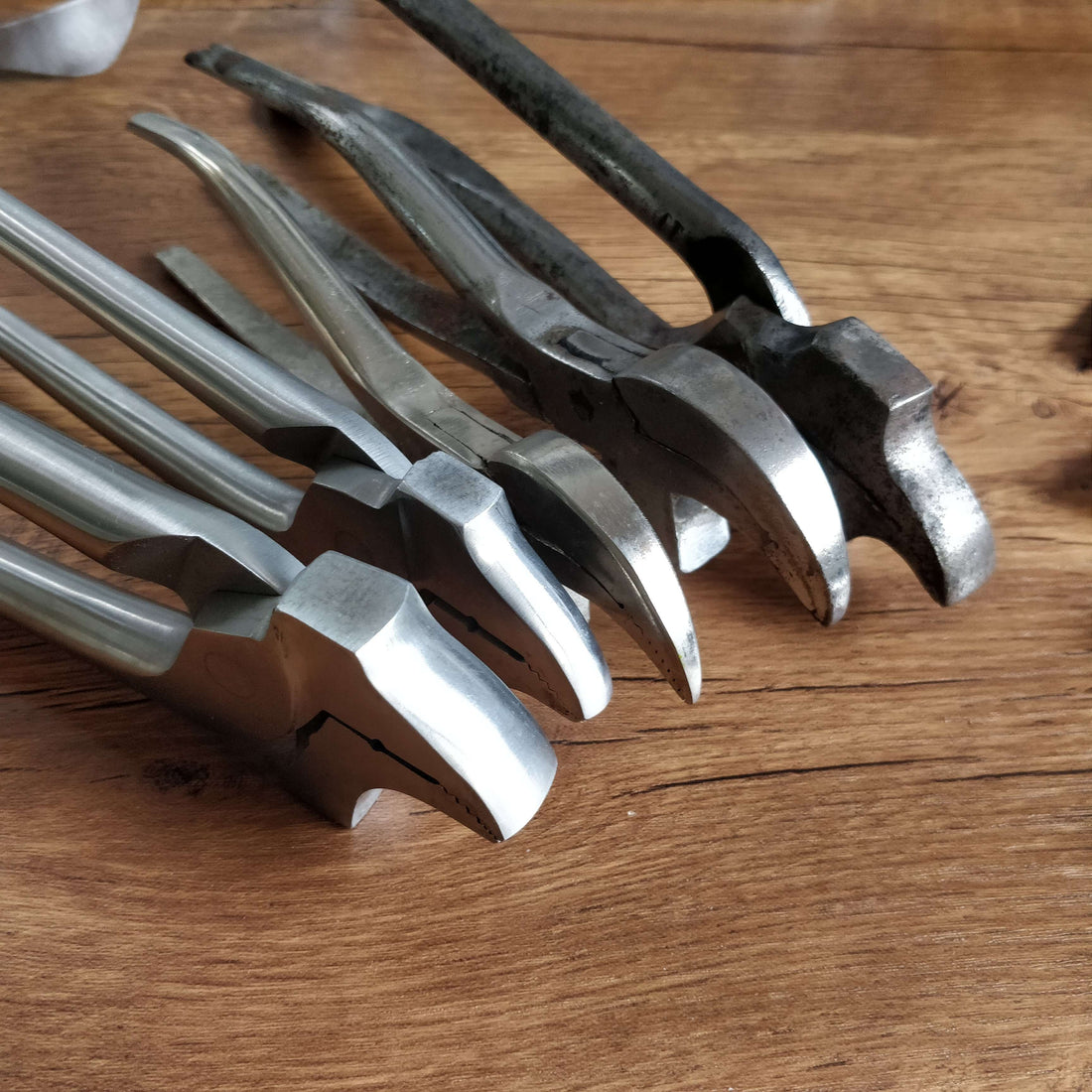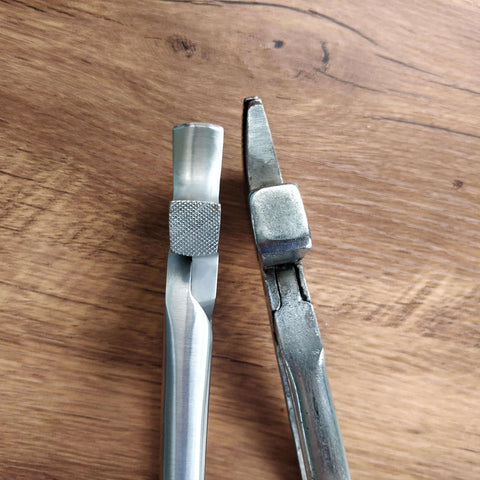
Japanese Shoemaking Tools Part 2: ワニ
Japan is a country famous for its enduring and meticulous craftsmanship. Artisans or "shoukunin" are people who dedicate themselves to the mastery and perfection of their craft.
While shoemakers are considered shoukunins, we are often reliant on other artisans when it comes to shoemaking tools.
Here's an introduction to my Japanese tools
Part 2: Lasting Pliers (Wani)
Wani means crocodile in Japanese, which is a pretty apt description of the lasting pliers.
 Crocodiles in action
Crocodiles in action
The last of the lasting pliers craftsman retired a couple of years before I moved to Japan. From what I gather, when craftsmen were abundant, shoemakers were able to custom order one, pretty much bespoke to their specification. These were not necessarily restricted to just the width and length but also the curvature, pivot point and handle shapes. Nowadays, the Japanese made stuff can only be found second-hand and often go for a pretty price, over ¥20,000, not unlike the famous Swedish E.A. Berg pliers.

Lucky find in auction
I was lucky to find a pair in an auction. These do not have the maker's name engraved on them and feel slightly different from the infamous Otani pliers that I was fortunate to have used in shoemaking school.
Japanese lasting pliers are usually narrow nosed, much more so than the Swedish patterned pliers. My pair measures 1.5mm and 3.5mm while the narrow Swedish comes in at 7mm.
 7mm vs 1.5mm vs 3.5mm
7mm vs 1.5mm vs 3.5mm
 Ruler for reference
Ruler for reference
Another feature is that the pivot/lever of the Japanese pliers usually comes in a smooth finish. This allows for a seamless transition from pulling in the leather to placing the nail and finally hammering the feather edge; something which I appreciate quite a bit nowadays.
 Swedish Pattern vs Japanese pivot
Swedish Pattern vs Japanese pivot
Despite the recent rise in number of bespoke shoemakers in Japan, it is a shame that this industry no longer exists in Japan. Part of the reason could be due to mechanisation of the shoemaking industry where bigger factories usually employ lasting machines rather than lasting by hand or perhaps due to outsourcing to lower cost countries such as China or Vietnam.
Ironically, if auction prices are any indication of the real value of these pliers then it may also have been the artisans themselves setting a price too low for survival.

2 comments
Not at all, on the contrary, they’re fantastic. Very ergonomically designed, in terms of balance, size and shape
Why Otani pliers is infamous? They are bad?